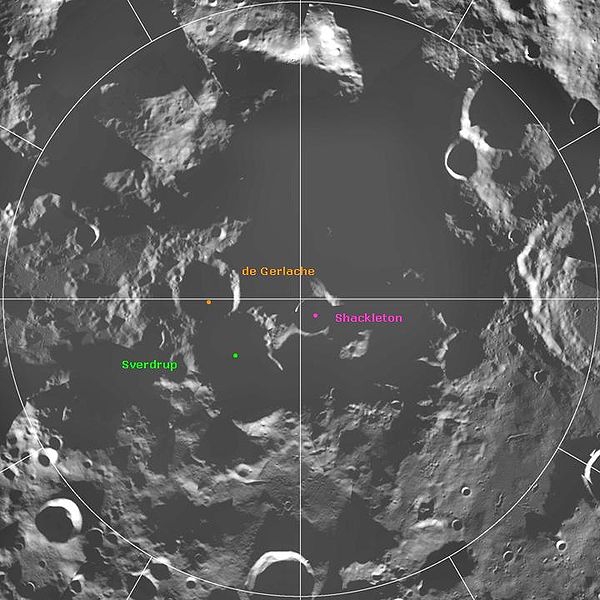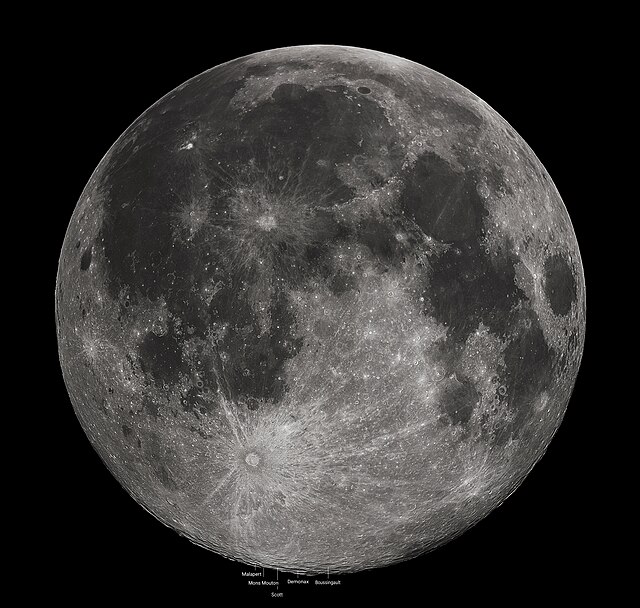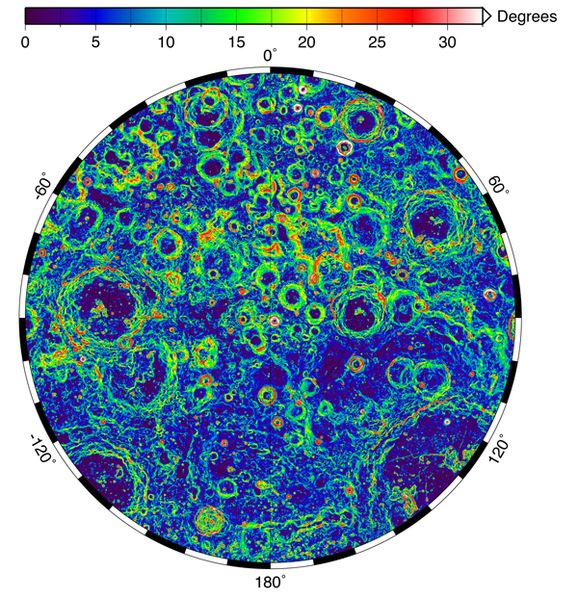Shackleton is an impact crater that lies at the lunar south pole. The peaks along the crater's rim are exposed to almost continual sunlight, while the interior is perpetually in shadow. The low-temperature interior of this crater functions as a cold trap that may capture and freeze volatiles shed during comet impacts on the Moon. Measurements by the Lunar Prospector spacecraft showed higher than normal amounts of hydrogen within the crater, which may indicate the presence of water ice. The crater is named after Antarctic explorer Ernest Shackleton.
South lunar pole as imaged by the Diviner instrument on the NASA's Lunar Reconnaissance Orbiter. Shackleton is at bottom center.
Mosaic of the Shackleton Crater created by LROC (Lunar Reconnaissance Orbiter) and ShadowCam
Shackleton as imaged by Clementine
Shackleton as imaged by LRO
The lunar south pole is the southernmost point on the Moon. It is of interest to scientists because of the occurrence of water ice in permanently shadowed areas around it. The lunar south pole region features craters that are unique in that the near-constant sunlight does not reach their interior. Such craters are cold traps that contain fossil record of hydrogen, water ice, and other volatiles dating from the early Solar System. In contrast, the lunar north pole region exhibits a much lower quantity of similarly sheltered craters.
The lunar south pole at the center of this image, situated on the rim of Shackleton Crater. Mosaic image created by LROC (Lunar Reconnaissance Orbiter) and ShadowCam
Full Moon with south polar region features marked
The several hundred kilometer wide Lunar south polar region as irradiated during summer. The south pole lies at the rim of Shackleton crater. The region is shadowed by the well illuminated Leibnitz plateau, flanked on the right by the Nobile crater and to the left by the partly shadowed Malapert crater and its Malapert peak illuminated at the rim of Haworth crater.
Degree of the slopes found near the south pole of the Moon






